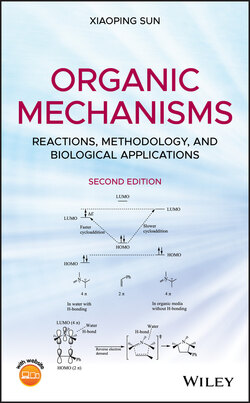Читать книгу Organic Mechanisms - Xiaoping Sun - Страница 15
1.3.1 Unimolecular Reactions
ОглавлениеThe microscopic steps of many concerted chemical reactions only involve a single reactant molecule. Such a concerted reaction whose mechanism only involves one reactant molecule is defined as a unimolecular reaction. It is generalized as follows (Eq. 1.1):
(1.1)
A, A*, and P represent a reactant molecule, an activated reactant molecule (transition state), and a product molecule, respectively. In a unimolecular reaction, a reactant molecule can possibly gain energy and then is activated by several means, including collision of the reactant molecule with a solvent molecule or with the wall of the reactor, thermally induced vibration of the reactant molecule, and photochemical excitation of the reactant molecule. After the molecule is activated, some simultaneous bond‐breaking and bond‐formation processes will take place in A* intramolecularly. As a result, the reactant molecule A will be transformed into one or more product molecules. Common examples of unimolecular reactions are thermal or photochemical dissociation of a halogen molecule (Reaction 1.2) and intramolecular ring‐opening and ring‐closure reactions (Reaction 1.3).
(1.2)
(1.3)
